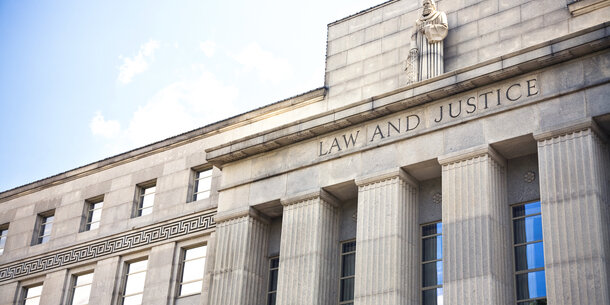The Supreme Court’s 2022 decision overturning Roe v. Wade was a watershed moment for state judicial politics. The decision eliminating the federal right to an abortion crystalized the reality that as federal courts limit the protections provided by the U.S. Constitution, state courts will increasingly decide today’s highest-stakes legal fights. Indeed, since Dobbs v. Jackson Women’s Health Organization, advocates have filed 38 cases in 23 states challenging state abortion bans under state law, not to mention major state court challenges related to crucial disputes over redistricting, climate change, and voting laws.
Dobbs also ushered in a new era of state judicial elections. For more than 20 years, the Brennan Center has tracked spending in the 38 states that use elections to select or retain the judges on their highest courts. Since 2000, our Politics of Judicial Elections reports have documented contributions to candidates as well as spending by political parties and interest groups (including the TV ads they run) in state supreme court elections.
These reports have shown big-money judicial races becoming more frequent and more expensive, and they detail the growing role of opaque interest groups. But in the first election cycle after Dobbs, these races, which have often failed to capture the same interest level as other statewide elections, saw money and attention like never before.
The 2021–2022 cycle of state supreme court elections broke numerous records:
- In total, candidates, interest groups, and political parties spent $100.8 million on state supreme court elections. This was nearly twice the spending in any prior midterm cycle, after adjusting for inflation.
- Outside interest groups spent more than ever before, accounting for $45.7 million — or 45.3 percent — of all money spent, a larger share of the spending than ever before.
- Several states saw their most expensive judicial election cycles ever, including Kentucky, Montana, North Carolina, and Ohio.
- For the first time, interest groups on the left and right spent almost the same amount on supreme court elections, though the balance varied significantly across states.
Looming over each of these records is the 2023 Wisconsin Supreme Court election, which makes some of this spending look quaint by comparison. That race, which took place in April 2023 and is not included in our analysis of the 2022 cycle, flipped the ideological majority on the Wisconsin Supreme Court for the first time in 15 years and attracted $51 million in total spending. That figure is more than double what any election for a single state supreme court seat had seen in the past, all but guaranteeing that the 2023–2024 cycle will be the most expensive ever. The 2022 cycle also does not include the November 2023 Pennsylvania Supreme Court election, which saw at least $22 million in spending and was itself one of the most expensive judicial races in history. Taken together, the Wisconsin and Pennsylvania races confirm that this new era of judicial politics is here to stay.
State supreme courts have long been important — they typically have the final word on questions of state law and oversee court systems that hear 95 percent of all cases filed in the United States each year. What has changed is that advocates are increasingly bringing their highest-profile cases in state courts, and political officials, interest groups, donors, and the public are becoming more aware of how important these courts are.
As our democracy increasingly looks to state courts to decide critical legal fights, it is essential that advocates understand the political dynamics shaping those courts and that states work to limit the worst effects of these political pressures. Increased spending paired with a lack of transparency make it difficult for the public to know who is shaping their state’s highest court and why. And weak ethics rules make it impossible for the public and parties in court to ensure that judges are not hearing cases involving their biggest financial supporters. As judicial elections evolve, so must the rules safeguarding those courts’ independence from political pressures and the public’s trust in them.



